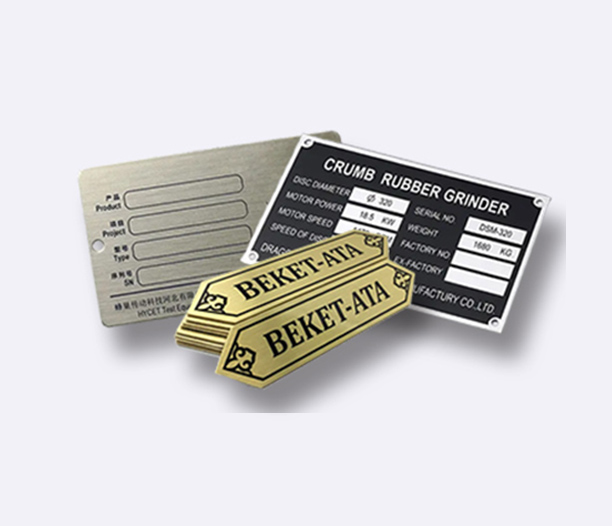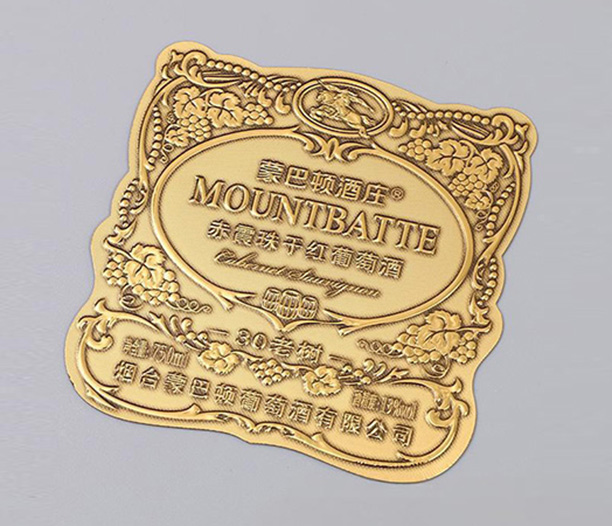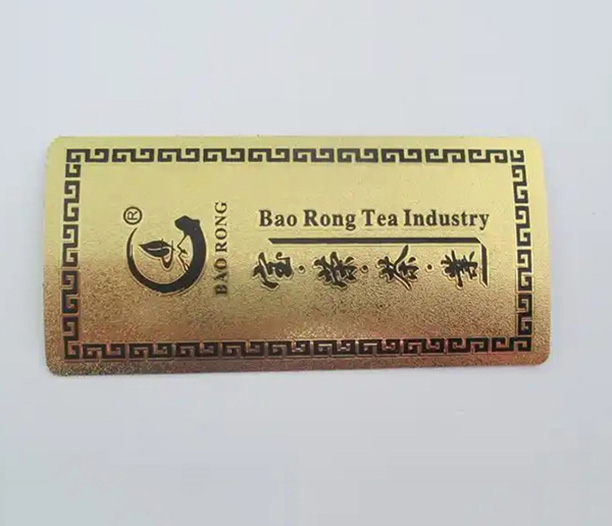When it comes to adding a touch of elegance, permanence, and identity to your home, few things are as effective as metal name plates for house. These are more than just simple markers; they are a statement of ownership, a welcome sign to guests, and a crucial element of your home's curb appeal. Whether you live in a modern urban townhouse or a rustic countryside cottage, a well-chosen metal name plate can significantly enhance your entrance's character.
This comprehensive guide will delve into everything you need to know about selecting the perfect metal name plates for house. We will explore the various types, design considerations, customization processes, installation methods, and maintenance tips. Finally, we'll answer the most common questions homeowners have about these elegant fixtures.
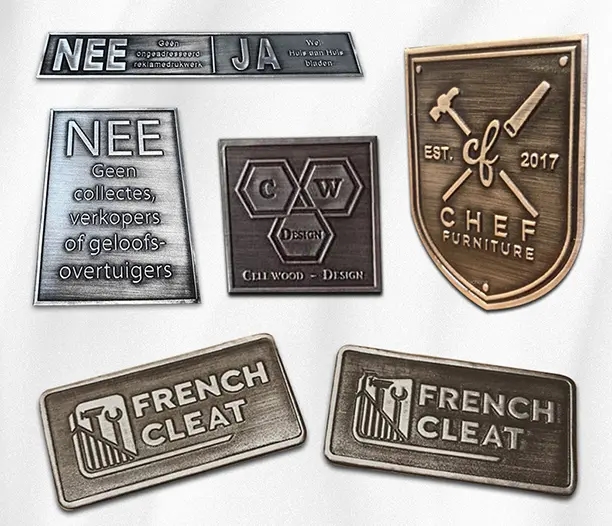
Why Choose a Metal Name Plate for Your Home?
The first impression of your home is often its exterior, and the details matter. A metal name plate for house offers a unique blend of durability and sophistication that other materials simply cannot match. Unlike plastic or wood, metal is resistant to the elements. It won't warp, crack, or fade easily under the sun, rain, or snow, ensuring your house number and name remain legible and beautiful for years to come.
Furthermore, metal conveys a sense of quality and permanence. It can be crafted into a wide array of styles, from sleek and contemporary to ornate and traditional, making it incredibly versatile. Investing in a high-quality metal house name plate is a small upgrade that pays significant dividends in terms of aesthetic appeal and functionality, making it easier for visitors, delivery drivers, and emergency services to locate your property.
Different Types of Metal for House Name Plates
Not all metals are created equal. The material you choose will impact the plate's appearance, durability, cost, and required maintenance. Here are the most popular options for metal name plates for house:
Stainless Steel: A top choice for its modern, minimalist look and exceptional corrosion resistance. It's incredibly strong, requires very little maintenance (usually just a wipe with a damp cloth), and is available in brushed, polished, or matte finishes. It's perfect for contemporary homes.
Brass: Known for its classic, timeless appeal. Brass develops a beautiful patina over time, which many homeowners desire for its vintage, antique look. If you prefer to maintain its original shiny, golden appearance, it will require periodic polishing. Polished brass metal name plates for house exude traditional elegance and warmth.
Aluminum: A lightweight, cost-effective, and highly versatile option. Aluminum is naturally rust-resistant and can be easily cut into various shapes and sizes. It is often used for modern, sleek designs and can be anodized or powder-coated in almost any color, offering tremendous design flexibility.
Bronze: Similar to brass but with a deeper, reddish-brown hue. Bronze is extremely durable and also develops a distinctive greenish patina over decades, giving it a stately, historical character. It is often used for heavy-duty, cast metal house name plates that are meant to last generations.
Cast Iron: Ideal for a robust, industrial, or vintage aesthetic. Cast iron is very heavy and strong but is susceptible to rust if not properly sealed and maintained with paint or a protective coating. It's best for homeowners seeking a specific, bold look.
Design and Customization Options for Your Metal Name Plate
The beauty of custom metal name plates for house lies in the ability to make it uniquely yours. The customization process involves several key decisions:
Text: This includes your house number, family name, or a short welcome message. Consider the font carefully—elegant scripts for a traditional feel, or clean, sans-serif fonts for a modern look. Ensure the text is large enough to be read from the street.
Size and Shape: The plate should be proportionate to the space where it will be mounted. Common shapes include rectangular, oval, circular, and custom silhouettes. For a truly personal touch, consider a shape that reflects a hobby (e.g., a sailboat for sailing enthusiasts).
Finish and Color: The metal's finish dramatically alters its appearance. Choices include polished (shiny), brushed (textured satin), matte, or antiqued. Powder coating allows you to add any color to aluminum or steel plates, enabling you to match your home’s trim or front door.
Mounting Style: How will the plate be attached? Options include:
Flat Mount: Fixed directly to the wall with screws.
Layered or 3D: Letters are individually cut and mounted on a backing plate, creating shadows and depth.
Freestanding: Placed on a porch or in a garden, often on a post.
Additional Elements: Many manufacturers offer add-ons like integrated lighting (backlit or front-lit), decorative scrolls, borders, or even small motifs like trees or animals.
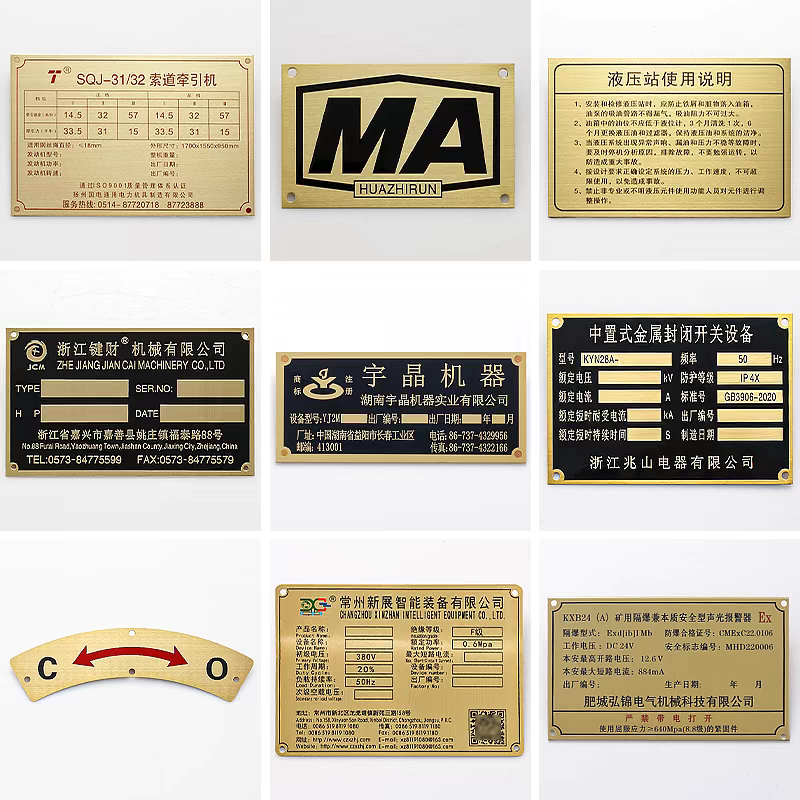
How to Install Your Metal House Name Plate
Proper installation is crucial for both security and aesthetics. Most high-quality metal name plates for house will come with pre-drilled holes and appropriate mounting hardware.
Planning: Hold the plate up against the wall to determine the perfect placement. It should be at eye level and in a well-lit area for maximum visibility. Use a level to ensure it will be straight.
Marking: Once positioned, mark the spots for the screw holes on the wall with a pencil.
Drilling: Depending on your wall material (brick, wood, siding, stucco), you may need to drill pilot holes and use appropriate wall plugs or anchors to ensure a secure fit. For heavy cast metal plates, this step is essential.
Mounting: Align the plate with the holes and secure it with the provided screws. Avoid overtightening, as this can damage the plate or warp the metal.
For complex installations, especially those involving electrical wiring for lights, hiring a professional electrician or handyman is highly recommended.
Caring for and Maintaining Your Metal Name Plate
To ensure your metal house name plate continues to look its best for decades, a little occasional maintenance goes a long way.
Stainless Steel and Aluminum: These are low-maintenance. Simply wipe them down with a soft cloth, warm water, and a mild detergent a few times a year to remove dirt, grime, and fingerprints.
Brass and Bronze (if you want to prevent patina): To maintain the shiny finish, use a specialized metal polish and a soft cloth. Polish in the direction of the grain. This may be needed every few months, depending on your local climate.
Brass and Bronze (if you want the patina): The natural aging process requires no active maintenance. The patina acts as a protective layer.
Cast Iron: Check periodically for chips in the paint or protective coating. Touch up any damaged areas promptly to prevent rust from forming.
Frequently Asked Questions (FAQs) About Metal Name Plates for House
Q1: Are metal name plates for a house expensive?
A: The cost varies widely based on the metal type, size, and complexity of customization. Simple, small aluminum plates can be very affordable, while large, intricately designed cast bronze plates are a significant investment. Generally, you can expect to pay anywhere from $50 to several hundred dollars.
Q2: How long do metal name plates last?
A: This is one of their biggest advantages. A high-quality metal name plate for house, especially those made from stainless steel, bronze, or brass, can easily last a lifetime with minimal care. Their durability far surpasses that of plastic, wood, or ceramic plates.
Q3: Can I have a backlit metal name plate?
A: Absolutely! Many companies specialize in creating illuminated metal house name plates. This is typically done by embedding LED lights behind or within the plate, providing excellent visibility at night and a stunning modern aesthetic. This usually requires professional installation to handle the electrical components.
Q4: How do I choose the right size?
A: Consider the viewing distance. If the plate will be seen from the street, it needs to be large enough to be read easily. A good rule of thumb is that every inch of letter height can be seen from 10 feet away. For example, 3-inch tall numbers can be read from approximately 30 feet away. Also, ensure the plate is proportionate to the space on your wall or post.
Q5: What’s the best way to clean my metal name plate?
A: For most metals, a soft cloth with warm, soapy water is sufficient. Avoid abrasive pads or harsh chemicals, as they can scratch the surface or remove protective coatings. For polished metals, a dedicated metal polish will restore shine.
Investing in a metal name plate for house is a decision that blends practicality with artistry. It defines your home’s address while expressing your personal style. By considering the factors outlined in this guide, you are well on your way to selecting a beautiful, durable, and functional piece that will welcome you home for years to come.



